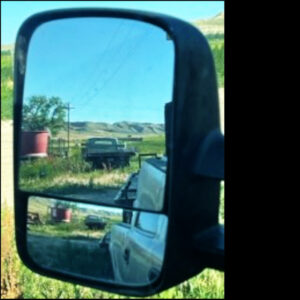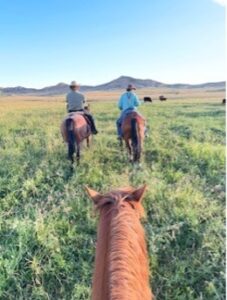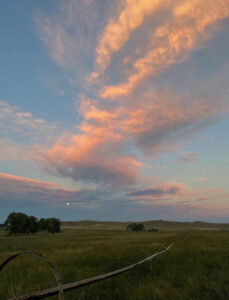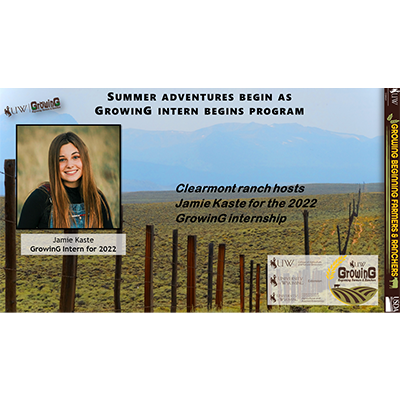Crawdad Clogs, Unsuitable Environments, & Wyoming Flora
#bfrdpwy #aginternship #RightRisk

Regarding irrigation practices, we continued to start up and run various pivots, as well as operating side rolls and flood irrigating in the wake of the first cutting. The side rolls have been plugging up with crawdads and garbage much quicker than the last time we ran them, so we attempted to locate holes in the screen and patch them where water from the ditch is filtered into the irrigation system. Otherwise, we practiced regular maintenance of removing and placing checkboards, picking up and replacing dams, etc. We also took on the task of cleaning clogged sprinkler heads as the pivot was running, which entailed driving up underneath a clogged bird head, pulling it off, and allow[ing] the water pressure to break through the buildup of debris.

This week, I was able to ride twice to participate in the process of cutting out unbranded calf pairs as the ranch prepares for their last branding of the season. I continued to practice pushing pairs towards an open gate with horseback herding techniques and observed calf-cow interactions to determine the true mother of an unbranded calf. While we were cutting out pairs, we came across a calf who was limping, but had no swelling in his upper leg. They determined the ailment to be foul foot/foot rot, and the process of trying to rope the calf began. The wrong calf was roped, and we ended up having to push the injured calf into the chute where we gave him an antibiotic pill and a shot of Oxytet. All of this was practice in understanding what can go wrong in these extraneous situations, and how flexibility is a necessary skill in cattle-handling.
[This week,] I would challenge the concept of ranching in unsuitable environments, specifically in/around the Amazon rainforest. In semi-arid steppe environments such as Wyoming, ranching can be practiced very sustainably to actually improve the soil quality via the organic inputs and animal impaction that accompany large herds of any grazing animal. This environment is accustomed to large herds of grazing animals such as bison, and if done correctly, cattle and sheep ranching can be done very similarly to have little environmental impact. However, in rainforest climates such as those in Brazil, cattle ranching has become a highly destructive practice. Clearing space for new ranches includes clear-cutting and deforestation of rainforest environments that house thousands of species. This deforestation, specifically through slash-and burn methods, leads to the release of CO2 into the atmosphere, habitat loss, degradation of lands of indigenous peoples in Brazil, etc. Overall, I challenge the concept of ranching and farming in environments unsuitable to the specifics of the crop or herd.

I plan to use what I’ve learned over the past week to work on practices that correct barn sour behavior in horses, meaning the horse is resistant to leaving the barn or pasture to work, and will consistently try to turn around. As someone with very limited riding experience, I am looking forward to continuing growing my skillset on prevention of these kinds of habits. I also plan to continue to build on my knowledge of native Wyoming flora. After looking into plants such as red clover, Canadian thistle, morning glories, alfalfa, and cheat grass, I am interested to look more into the diversity in a pasture that can be cultivated using holistic resource management practices.
[Questions I have this week are:] What is the easiest way to remove a rope from calf? How many cuttings will a ranch/farm get in a brittle environment vs a non-brittle environment per season? How do you correct the behavior of a barn sour horse? How does cheatgrass (downy brome) increase the likelihood of rangeland fires?
Submitted by: Jamie Kaste
Edited by: GrowinG Internship Team

